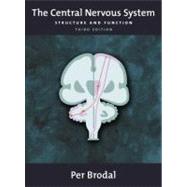
What is included with this book?
| A Brief Survey | xi | ||||
| Studying the Structures and Function of the Nervous System | xiii | ||||
| Animal Experiments Crucial for Progress | xiii | ||||
| Ethics and Animal Experiments | xiv | ||||
| Sources of Error in All Methods | xiv | ||||
| Revising Scientific Truths from Time to Time | xv | ||||
|
|||||
|
3 | (23) | |||
|
3 | (7) | |||
|
10 | (5) | |||
|
15 | (2) | |||
|
17 | (9) | |||
|
26 | (40) | |||
|
26 | (9) | |||
|
35 | (12) | |||
|
47 | (19) | |||
|
66 | (37) | |||
|
66 | (8) | |||
|
74 | (9) | |||
|
83 | (5) | |||
|
88 | (1) | |||
|
89 | (1) | |||
|
90 | (4) | |||
|
94 | (9) | |||
|
103 | (32) | |||
|
103 | (19) | |||
|
122 | (3) | |||
|
125 | (10) | |||
|
|||||
|
135 | (4) | |||
|
135 | (1) | |||
|
135 | (2) | |||
|
137 | (1) | |||
|
137 | (1) | |||
|
138 | (1) | |||
|
139 | (44) | |||
|
139 | (6) | |||
|
145 | (10) | |||
|
155 | (6) | |||
|
161 | (11) | |||
|
172 | (3) | |||
|
175 | (8) | |||
|
183 | (25) | |||
|
183 | (2) | |||
|
185 | (9) | |||
|
194 | (6) | |||
|
200 | (8) | |||
|
208 | (13) | |||
|
208 | (7) | |||
|
215 | (4) | |||
|
219 | (2) | |||
|
221 | (12) | |||
|
221 | (3) | |||
|
224 | (2) | |||
|
226 | (2) | |||
|
228 | (3) | |||
|
231 | (2) | |||
|
233 | (10) | |||
|
233 | (4) | |||
|
237 | (6) | |||
|
|||||
|
243 | (22) | |||
|
243 | (8) | |||
|
251 | (7) | |||
|
258 | (3) | |||
|
261 | (4) | |||
|
265 | (21) | |||
|
265 | (6) | |||
|
271 | (3) | |||
|
274 | (2) | |||
|
276 | (5) | |||
|
281 | (5) | |||
|
286 | (17) | |||
|
286 | (10) | |||
|
296 | (1) | |||
|
297 | (2) | |||
|
299 | (4) | |||
|
303 | (18) | |||
|
303 | (6) | |||
|
309 | (3) | |||
|
312 | (3) | |||
|
315 | (6) | |||
|
321 | (12) | |||
|
321 | (2) | |||
|
323 | (10) | |||
|
|||||
|
333 | (16) | |||
|
333 | (7) | |||
|
340 | (2) | |||
|
342 | (3) | |||
|
345 | (4) | |||
|
349 | (22) | |||
|
349 | (4) | |||
|
353 | (1) | |||
|
354 | (1) | |||
|
355 | (3) | |||
|
358 | (1) | |||
|
359 | (1) | |||
|
359 | (2) | |||
|
361 | (3) | |||
|
364 | (7) | |||
|
|||||
|
371 | (26) | |||
|
371 | (3) | |||
|
374 | (6) | |||
|
380 | (2) | |||
|
382 | (1) | |||
|
382 | (4) | |||
|
386 | (3) | |||
|
389 | (8) | |||
|
397 | (20) | |||
|
397 | (1) | |||
|
398 | (4) | |||
|
402 | (3) | |||
|
405 | (5) | |||
|
410 | (1) | |||
|
411 | (6) | |||
|
|||||
|
417 | (18) | |||
|
417 | (4) | |||
|
421 | (2) | |||
|
423 | (2) | |||
|
425 | (10) | |||
|
435 | (30) | |||
|
435 | (8) | |||
|
443 | (5) | |||
|
448 | (9) | |||
|
457 | (1) | |||
|
458 | (7) | |||
| Literature | 465 | (32) | |||
| Index | 497 |
The New copy of this book will include any supplemental materials advertised. Please check the title of the book to determine if it should include any access cards, study guides, lab manuals, CDs, etc.
The Used, Rental and eBook copies of this book are not guaranteed to include any supplemental materials. Typically, only the book itself is included. This is true even if the title states it includes any access cards, study guides, lab manuals, CDs, etc.